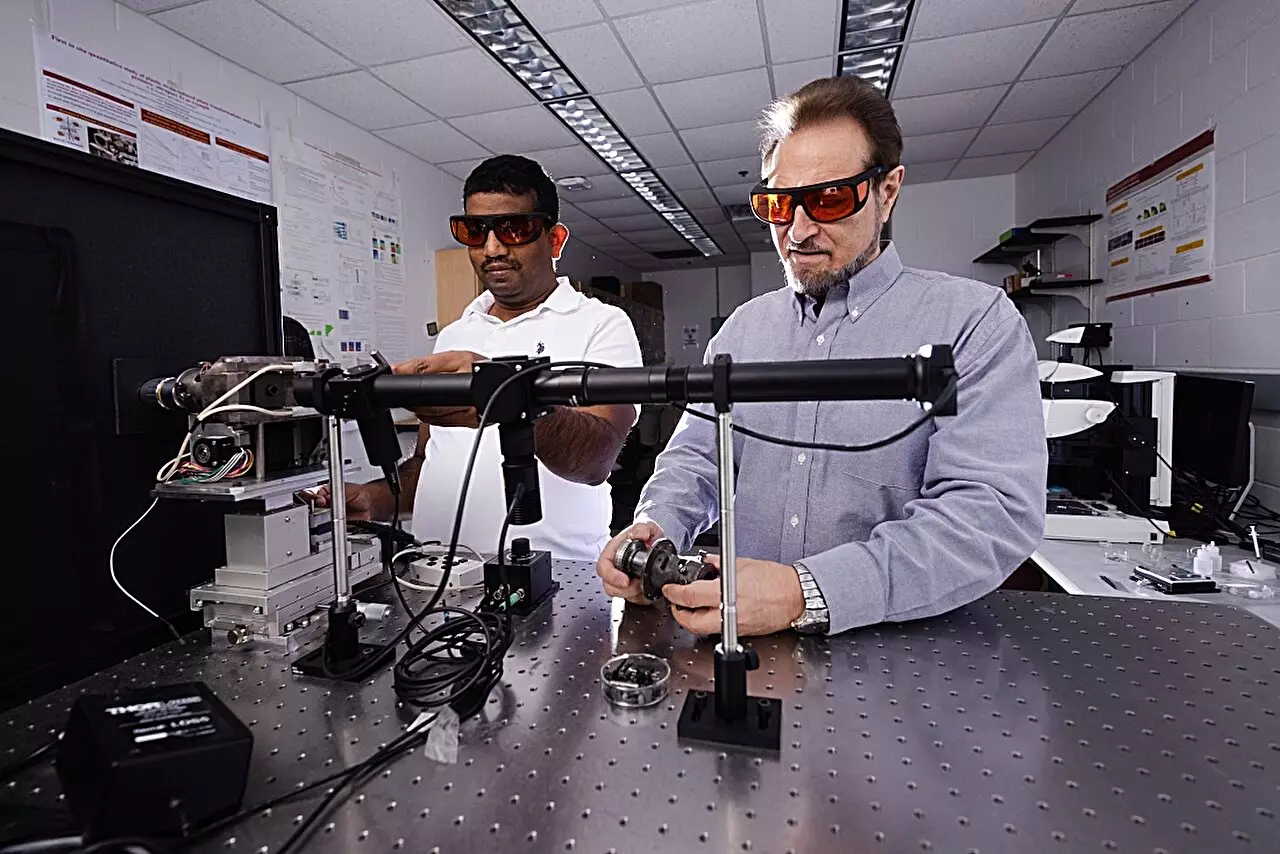In 1999, Valery Levitas embarked on a significant transition from Europe to the United States with a unique and groundbreaking tool—the rotational diamond anvil cell. This advanced device has since been instrumental in pushing the boundaries of materials science at Iowa State University, where Levitas holds the title of Anson Marston Distinguished Professor of Engineering. The tool allows researchers to subject materials to extreme conditions, revealing real-time insights about their structural behaviors and transformations under both pressure and shear strain. The essence of this research lies not just in observing how materials change, but in understanding the fundamental principles that govern these changes—a multidisciplinary approach encompassing advanced mechanics, material science, physics, and applied mathematics.
Among the materials under investigation, silicon—a cornerstone of the electronics industry—has garnered particular attention due to its complex behavior under mechanical stress. In a recent study published in *Nature Communications*, Levitas and his team probe into the unique phase transformations that silicon undergoes when subjected to both pressure and plastic shear deformation. Prior studies had largely focused on silicon’s response to high-pressure environments alone. The researchers, however, took an innovative approach by examining how silicon behaves not just under pressure, but under conditions where the material is also permanently deformed.
Their experiments manipulated particles of silicon, at various nanoscale sizes, using the rotational diamond anvil cell. The dimensions of these particles were astoundingly small, stretching down to just 100 billionths of a meter. By applying a pressure of 0.3 gigapascals and simultaneously inducing plastic deformations, the team observed a fascinating transformation from silicon’s standard crystal structure—referred to as “Si-I”—to a different phase known as “Si-II.” This transformation typically requires high pressures of 16.2 gigapascals under normal conditions, showcasing a significant reduction in the pressure needed by a factor of 54.
Levitas emphasized that the primary goal of their research is not merely to alter the physical shape of silicon but to investigate changes at the microstructural level. This focus on microstructure is crucial because it determines the resultant properties of the material. With seven phases of silicon under consideration, the implications of these transformations could lead to new materials exhibiting distinct properties, desirable for various industrial applications, especially in electronics and optics.
The potential to generate nanostructured materials or nanocomposites using lower pressures presents a revolutionary opportunity for industries tied to high-pressure material transformations. Traditionally, working under such extreme conditions posed practical challenges for industrial applications. However, Levitas’ team is breaking the mold. They aim to achieve high-performance material phases that typically require immense pressures, but at more feasible levels that the industry can manage.
Interestingly, Levitas had long hypothesized that silicon might exhibit atypical responses to the strains imposed by the rotational diamond anvil cell. This foresight was pivotal; had he not anticipated such phase transformations at lower pressures, the team might not have pursued these experiments at all. The innovative angle the researchers have taken is reshaping the narrative around silicon’s behavior, encouraging further investigations into other materials that could showcase similar transformative properties under mechanical stress.
Despite having spent two decades theorizing about material responses, the empirical results are more than just a confirmation of previous beliefs—they are a call to action for future research. By redefining the parameters of materials science, Levitas and his team are not just contributing to existing knowledge; they are paving the way for novel applications that could transform various industries, from electronics manufacturing to semiconductor development.
Valery Levitas’s work reflects a critical intersection of fundamental research and potential real-world applications. The opportunity to manipulate and understand the phase transformations of silicon through innovative engineering techniques represents a significant leap forward in materials science. As research continues to evolve, the implications of these findings may revolutionize not only how we understand silicon, but also how we harness its properties for practical use in the rapidly advancing fields of technology and engineering. This journey into the realm of material transformations is just beginning, and its potential remains vast.


Leave a Reply